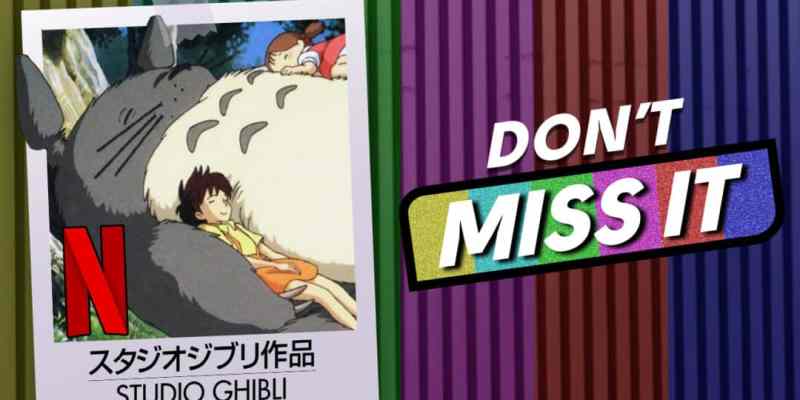Christmas is often an opportunity to spend time with the people that you love and maybe share some of the things that you love with them. For over 30 years, Studio Ghibli has been one of the most celebrated voices in animation. The Japanese studio was founded by producer Toshio Suzuki and director Hayao Miyazaki, following the breakout success of Miyazaki’s Nausicaä of the Valley of the Wind. Indeed, that animated classic has retroactively been folded into the Ghibli brand, often packaged with box sets and collections.
The studio’s first film was Miyazaki’s Castle in the Sky in 1986. It has only grown from there. The power of Studio Ghibli lies in the breadth of its ambition and the scope of its imagination. The studio is defined not only by the level of technical craft on display, but also by the variety in its output. Western animation is still frequently seen as a medium for children’s entertainment.
While Ghibli understands the importance of crafting these sorts of stories for children, it has never allowed itself to be constrained by that expectation. Ghibli produces films that speak to children of all ages, with movies like Howl’s Moving Castle or Porco Rosso resonating across generations like the best Pixar films. However, it also produces films aimed at more mature audiences.
This is perhaps most obvious by looking at the double feature that the company released in April 1988, pairing My Neighbor Totoro with Grave of the Fireflies. Miyazaki’s My Neighbor Totoro has become a family classic. In contrast, Grave of the Fireflies offers an unsettling and harrowing narrative. It was directed by Isao Takahata, invited to join the young studio by Miyazaki.
These animated films are both universal and esoteric. These stories speak to the human condition, offering meditations on themes like mankind’s relationship to nature or the complexities of human interaction. However, the films explore these ideas from a uniquely Japanese perspective that can seem refreshing and engaging to audiences overly familiar with western animation.
Films like Grave of the Fireflies and The Wind Rises are rooted in specific Japanese historical experiences, but they touch on very recognizable feelings. Even the fantasy worlds of My Neighbor Totoro or Spirited Away are inflected by Japanese spirituality and belief but still resonate beyond that specific cultural context. The result is cinema that is often transcendent and truly magical.
Some of Studio Ghibli’s output has subsequently crossed over into the mainstream. Spirited Away was something of a breakthrough for the company, its awards success allowing the studio to reach a broader audience. Studio Ghibli has gained a lot of mainstream acceptance and traction among western audiences in recent years. A lot of that is a result of accessibility.
In the studio’s early years, international distribution was very difficult. Nausicaä of the Valley of the Wind was infamously recut by western distributors pushing for a younger audience. Miyazaki reportedly faced down Harvey Weinstein over Miramax’s desire to edit Princess Mononoke, with Miyazaki’s producer delivering Weinstein a samurai sword with a note – and a warning – advising “no cuts.”
Recent years have been kinder to international audiences hoping to embrace the work of Studio Ghibli. Disney would re-dub many of the older films, and the newer films received a great deal of care in translation. The advent of streaming (and even the era of affordable international shipping) has done a lot to put these movies in the hands of an eager and hungry audience.
Earlier this December, distributor GKids announced the Studio Ghibli back catalogue would be available for purchase for the first time from American digital vendors. This is ahead of plans to make the entire back catalogue available to HBO Max subscribers in May 2020. As a result, these films should be more accessible than ever before.
It feels appropriate that these films should be made available for digital download-to-own for the first time in the run-up to Christmas. Of course, the work of Studio Ghibli will be enchanting whenever and however it is watched, but it feels particularly suited to this time of year.
There is something to be said for sharing a little magic at Christmastime.
The entire 21-film Studio Ghibli catalogue is now available for purchase from online providers Apple TV, Amazon VOD, Vudu, Google Play, Sony, Microsoft, and Fandango Now within the United States and Canada.
